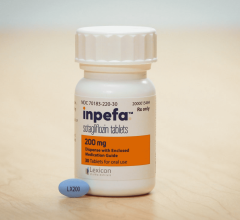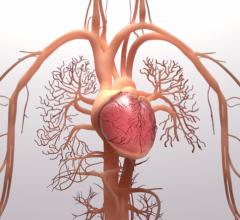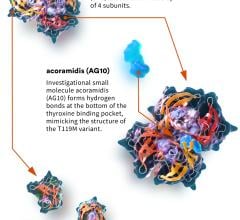
October 8, 2010 – New data from the HORIZONS-AMI trial shows that administering the anticoagulant bivalirudin (Angiomax) enhances survival in heart attack patients undergoing angioplasty after three years. The results were presented at the Transcatheter Cardiovascular Therapeutics (TCT) 2010 symposium in Washington, D.C.
The study compared bivalirudin to the use of heparin plus a GP IIb/IIIa inhibitor. The data also showed that a drug-eluting stent (paclitaxel) was as safe and more effective than a bare-metal stent.
“The results at three years, representing the final report from the HORIZONS-AMI trial, are consistent with and extend the two-year data that we reported last year at TCT,” said Gregg W. Stone, M.D., professor of medicine at Columbia University College of Physicians and Surgeons, director of cardiovascular research and education at the Center for Interventional Vascular Therapy at New York Presbyterian Hospital/Columbia University Medical Center and co-director of the medical research and education division at the Cardiovascular Research Foundation. Stone is the principal investigator of the HORIZONS-AMI trial.
“The data demonstrate that use of bivalirudin alone, as opposed to a combination of heparin and a GP IIb/IIIa inhibitor, can save lives,” Stone said. “In addition, a significant reduction in second heart attacks has emerged over time in patients treated with bivalirudin.”
After three years, treatment with bivalirudin resulted in:
• A 36 percent reduction in major bleeding and a 24 percent reduction in re-infarction, with nonsignificantly different rates of stent thrombosis, target vessel revascularization (TVR) and stroke.
• A 44 percent reduction in cardiac mortality and a 25 percent reduction in all-cause mortality, the latter representing 18 lives saved per 1,000 patients treated with bivalirudin.
In addition, at three years, the implantation of a paclitaxel-eluting stent resulted in:
• A significant 40 percent reduction in ischemic target lesion revascularization (TLR), with preservation of the gains achieved within the first year over time.
• Nonsignificantly different rates of all-cause and cardiac mortality, re-infarction and stent thrombosis.
For more information: www.crf.org


 July 10, 2024
July 10, 2024 








